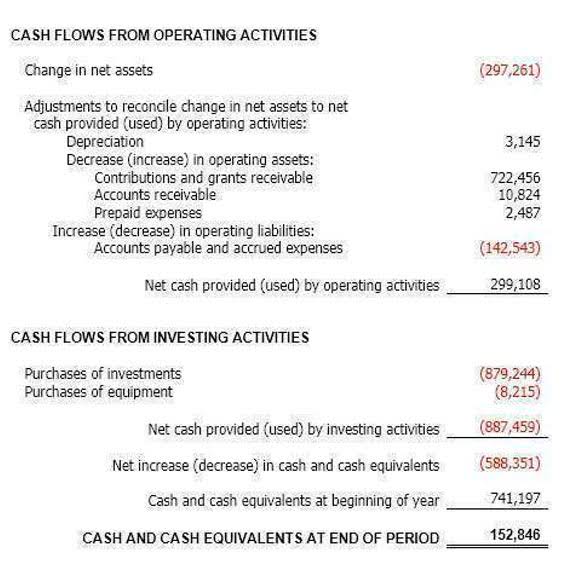
Managers, on the other hand, often rely on the cash flow statement to ensure the business can cover its expenses. The cash flow statement bridges the balance sheet and profit and loss statement by showing the actual cash generated or used by the company in a given period. This statement highlights how changes in the balance sheet and operations affect cash and cash equivalents, which are reported on the balance sheet.

Income Statement
To do this, you can use current and past data as a barometer, along with identifying market and economic trends and your current sales trajectory. The Statement of Cash Flows begins with net income from the Income Statement. It then adjusts this net income for non-cash expenses, such as depreciation, and accounts for changes in asset and Oil And Gas Accounting liability accounts found on the Balance Sheet. These adjustments reconcile net income, which is based on accrual accounting, to the actual cash generated or used by the business.
- The Statement of Stockholders’ Equity, sometimes called the Statement of Retained Earnings, details changes in the equity accounts over a period.
- Together, these documents provide valuable information for business accounting and strategic decision-making regarding investments, expansions, and cost-cutting.
- This flow demonstrates how a company’s profitability directly influences cumulative earnings retained within the business.
- Running a business takes a lot of work, and all of these calculations and analyses are put of that.
- The Statement of Cash Flows reports cash inflows and outflows from a company’s operating, investing, and financing activities over a period.
- The statement of retained earnings presents changes in equity during the reporting period.
Balance Sheet
Key ratios include the debt-to-equity ratio, Accounting Periods and Methods current ratio, return on equity, and net profit margin. These metrics evaluate a company’s solvency, liquidity, efficiency, and profitability. Next, a profit and loss statement—also known as an income statement—measures a company’s financial performance over a specific period. It details revenue, costs, and expenses to show the net income or profit earned. This statement is vital for assessing a company’s profitability, operations, and cost management.
How Are the Three Major Financial Statements Linked?

Depreciation starts on your balance sheet as Property, Plants & Equipment (PP&E), before flowing onto your income statement where it’s listed as an expense. Analyzing a balance sheet means calculating ratios like the current ratio, debt-to-equity ratio, and return on equity. This analysis offers insights into liquidity, indebtedness, and profitability. Understanding these ratios provides a clearer picture of financial health and guides strategic decision-making for your business.
- A pro forma financial statement is a projection of a company’s financial performance based on hypothetical scenarios or future events.
- The Income Statement, often called the Profit and Loss (P&L) statement, details a company’s revenues, expenses, gains, and losses over a reporting period, showing its net income or loss.
- It’s important to understand that each statement feeds into the next, creating a loop that comprehensively illustrates a company’s financial dynamics.
- A business balance sheet shows a company’s financial health, indicating liquidity, leverage, and the overall balance of income and expenditure over time.
- Financial statements are essential tools for understanding a company’s financial health and operational performance.
- The profit and loss statement then details the company’s operational performance over a period, showing how revenues translate into net income or loss.
Financial Accounting
The financial statements are comprised of four basic reports, which are noted below. It’s important to understand that each statement feeds into the next, creating a loop that comprehensively illustrates a company’s financial dynamics. The following video summarizes the four financial statements required by GAAP. There’s more to financial planning than documenting what’s happened in the past and what’s ongoing in the present. That’s where a pro forma analysis comes in, which involves projecting future statements and target goals.

- Various stakeholders, including investors, creditors, and management, rely on these statements to make informed decisions and assess a company’s financial standing.
- The components of a profit and loss statement include sales revenue, cost of goods sold (COGS), gross profit, operating expenses, and net profit.
- It consolidates cash movements from operating, investing, and financing activities by drawing data from the other finalized statements, providing a complete financial overview.
- The financial statement that reflects a company’s profitability is the income statement.
- The cash flow statement bridges the balance sheet and profit and loss statement by showing the actual cash generated or used by the company in a given period.
A cash flow statement shows a detailed look at where a company’s money comes from and how it’s spent. This clarity is vital for assessing a firm’s ability to generate positive cash flow, fund operations, and grow without external financing. When the financial statements are issued internally, the management team usually only sees the income statement and balance sheet, since these documents are relatively easy to prepare. The Statement of Stockholders’ Equity, sometimes called the Statement of Retained Earnings, details changes in the equity accounts over a period. It tracks changes in contributed capital and retained earnings, reflecting how profits are reinvested in the business or distributed as dividends. The Statement of Cash Flows is the last financial statement prepared in the accounting which of the following financial statements typically is prepared last? cycle.

- The ending balance of retained earnings from the Statement of Stockholders’ Equity then feeds directly into the Balance Sheet.
- It details revenue, costs, and expenses to show the net income or profit earned.
- Accounting for depreciation is critical when composing your financial statements.
- Net income (or loss) increases (or decreases) the retained earnings component of stockholders’ equity.
- When the financial statements are issued internally, the management team usually only sees the income statement and balance sheet, since these documents are relatively easy to prepare.
The statement of cash flows shows the cash inflows and outflows for a company over a period of time. The balance sheet, lists the company’s assets, liabilities, and equity (including dollar amounts) as of a specific moment in time. That specific moment is the close of business on the date of the balance sheet. Notice how the heading of the balance sheet differs from the headings on the income statement and statement of retained earnings.
Recent Questions in Accounting – Others
The Income Statement, which calculates net income, is primary in this regard. A pro forma financial statement is a projection of a company’s financial performance based on hypothetical scenarios or future events. These statements are used for planning and decision-making purposes, allowing companies to forecast the effects of significant changes, such as acquisitions, divestitures, or new financing. Pro forma statements are essential for strategic planning and investment analysis.
